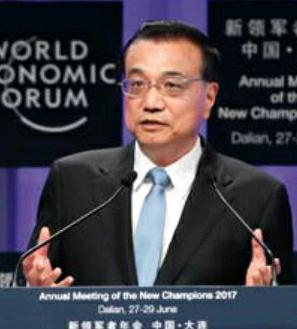Inclusive Growth
2017-09-06byLiZhuoxi
by+Li+Zhuoxi
First mentioned by the Asian Development Bank in 2007, the term generally refers to fair, reasonable distribution of economic growth through coordinated, sustainable development, both socially and economically.
From June 27 to 29, 2017, the 11th Summer Davos was held in Dalian with the theme “Achieving Inclusive Growth in the Fourth Industrial Revolution.” At the opening ceremony, Chinese Premier Li Keqiang delivered a speech in which he pointed out that a major factor in maintaining Chinas steady economic progress was intensification of inclusive growth during the global economic downturn. He believed that such intensification guarantees comparatively balanced development and helps avoid an idle labor force and resources, enhance social fairness, and promote developmental inclusiveness, which can cumulatively create sustainable development.
In recent years, the idea of“inclusive growth” has been deeply rooted in domestic and foreign policies enacted by the Chinese government and become part of the global concept of development.
In the new era, China has conformed to megatrends of economic globalization and the new industrial revolution, evidenced by its inclusive development strategy, social system guarantees and improved policies and measures. The best example is the Belt and Road Initiative, a policy to counter a fragmented international situation and sluggish global economic growth and a platform to accelerate inclusive global growth, guided by the principle of “building a community with a shared future to blaze a new trail for peaceful world development and common prosperity.”
Over the last few years, China has seen the emergence of many new business models such as bicycle sharing and mobile payments, thanks to the governments policy to promote “mass entrepreneurship and innovation.” In todays China, people are finding wide-ranging opportunities change their lives, and more groups are sharing the national economic growth.